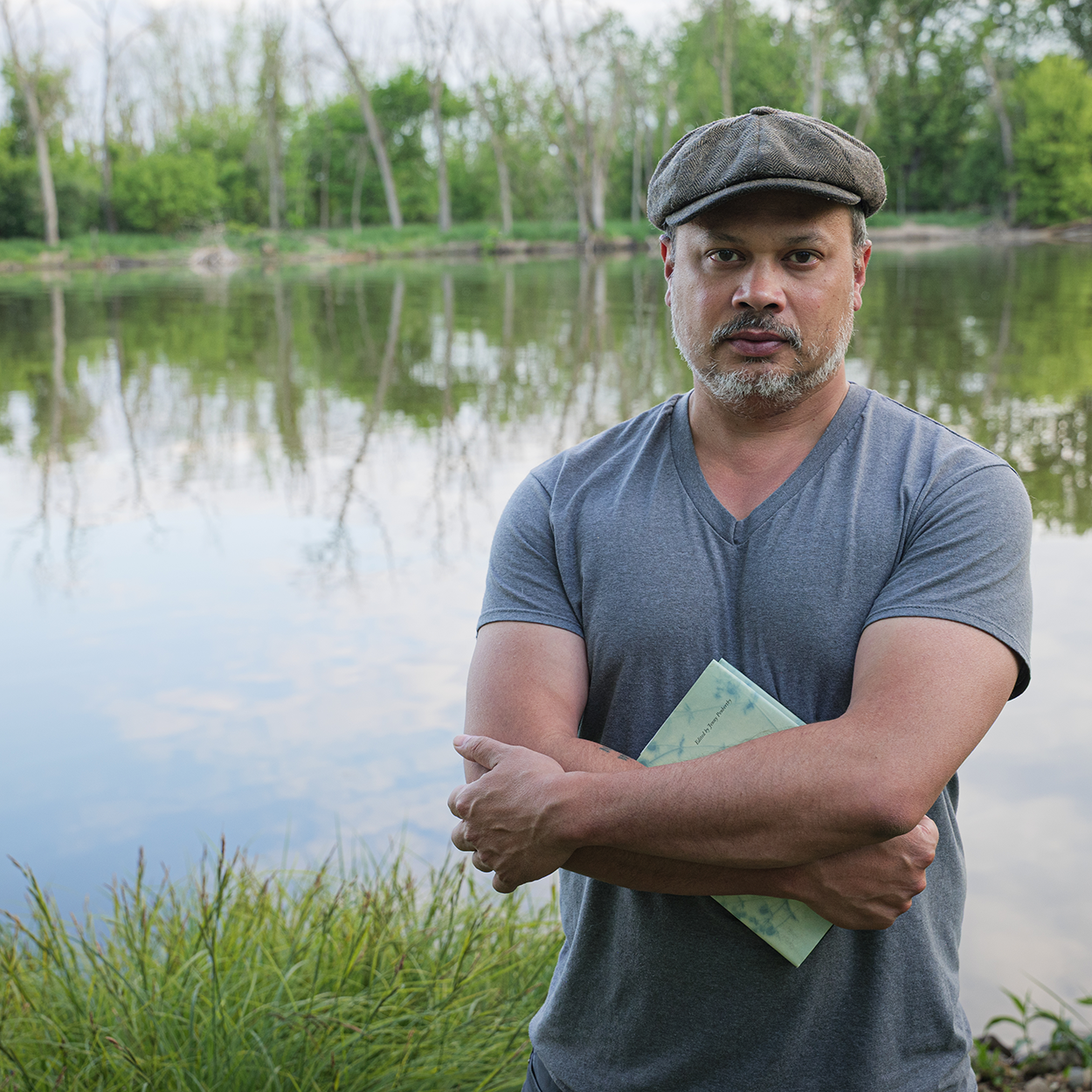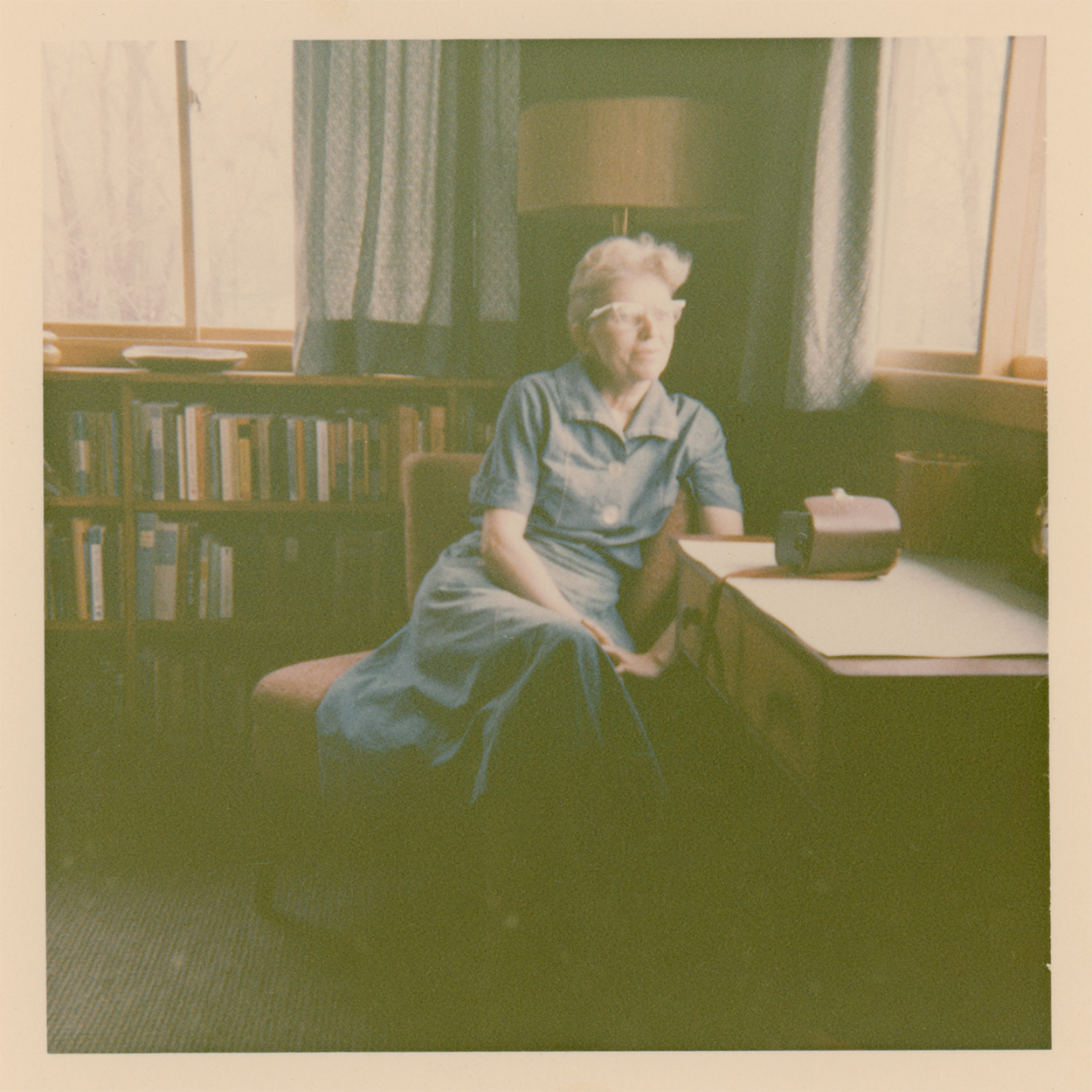Welcome Poets, a digital series from PBS Wisconsin, examines the life of mid-20th-century poet Lorine Niedecker through the lens of former Wisconsin Poet Laureate Nicholas Gulig.
Stream the series at pbswisconsin.org/welcomepoets and on the free PBS app on all streaming devices and smart TVs.
PBS Wisconsin’s Samantha Nash caught up with archivist Clara Wolfe to explore how archival images and documents helped bring Welcome Poets to life.
Samantha Nash: Clara, first of all, what is an archivist? And what role does archival material play in a project like this?
Clara Wolfe: My job at PBS Wisconsin is to research, source, and manage archival material for our projects involving historical narratives, and there’s a wide range of what that can mean. It’s everything from physically going to institutional archives or sorting through boxes in cobwebbed attics; it can be online digital research. It can be connecting with archives across the country, or connecting with individuals. Understanding what objects might exist and how these can help better understand the people, places, and events we are sharing stories about, is a big part of my job.
Archives are such an incredible resource for filmmaking. There is a real power to being able to go and see the original materials, whether that’s letters written between colleagues or friends, or photographs of a trip, a family, a scientific discovery, or it’s the object itself. There are so many clues about what has happened to bring the viewer not only into the story that we are trying to share with them, but to allow them to see it themselves.

Nicholas Gulig stands on Blackhawk Island near Fort Atkinson. (Photo by Colin Crowley)
Nash: Every trip is a treasure hunt — that sounds so interesting! Lorine was a mid-20th-century poet. What kinds of materials did you find to add her voice and presence to Welcome Poets?
Wolfe: The Hoard Historical Museum and the Friends of Lorine Niedecker have really given an unprecedented amount of access to showcase what is in the archive. Over months of visits and following rabbit holes, that has allowed us to show about 300 items, including original pages and photographs. There are dozens of materials that are being seen for the first time by the greater world. And that is really due to Ann Engelman’s work and the unbelievable support from the Hoard Historical Museum in Fort Atkinson.
Nash: You must have looked at a lot of photos and documents for this project. Is there anything that stands out as your favorite?
Wolfe: What I love about Lorine is that she treated her practice the way that an Olympic athlete trains; every day was practicing her work, her poetry. Her entire life was in service of that. She would make these handmade books. I mean, literally every part of it: The cover was sometimes made out of wrapping paper that she cut and constructed into a book cover. Her husband, Al, had adult children, whom she very much embraced as her family, and she would make these books for them for Christmas or birthday presents. There’s one titled “Kooky Conversations.” It is a record of conversations between her and Al. To me, they provide a model of how to have a daily practice. They also give such a lens into what her life was like.
She lived in possibly the most beautiful place you can be, and she was just committed to her practice every day, which meant so much sitting in one spot. She said she believed that poetry should not be read aloud, it should be read to yourself. And after spending time at her house out on the Blackhawk River, I often think of her poems, that they were meant to be read at the river, sitting outside. And in moments you might drift off looking at a bird, and then you’ll find your way back to her poem. And then you can just be there and remember to be where you are.

Lorine Niedecker at her Blackhawk Island cabin. (Courtesy of the Hoard Historical Museum)
Nash: That’s truly lovely. I know you’ve seen the whole series already; what was your biggest impression after watching it?
Wolfe: In Wisconsin and beyond, there are unbelievably dedicated artists, makers, thinkers and doers working away in rural communities, in their little cabin in the woods next to the river, just like Lorine. How important those voices are. How present they are. How long they have been there, and how diverse they are. And to look for them. So often, people in history can try to bury them, but if you look, they’re there. People who have made something, thought something, done something, and made the choice to leave a trace of it for us to learn from: it’s such a gift.
 Passport
Passport







What do you think?
I would love to get your thoughts, suggestions, and questions in the comments below. Thanks for sharing!
Samantha Nash